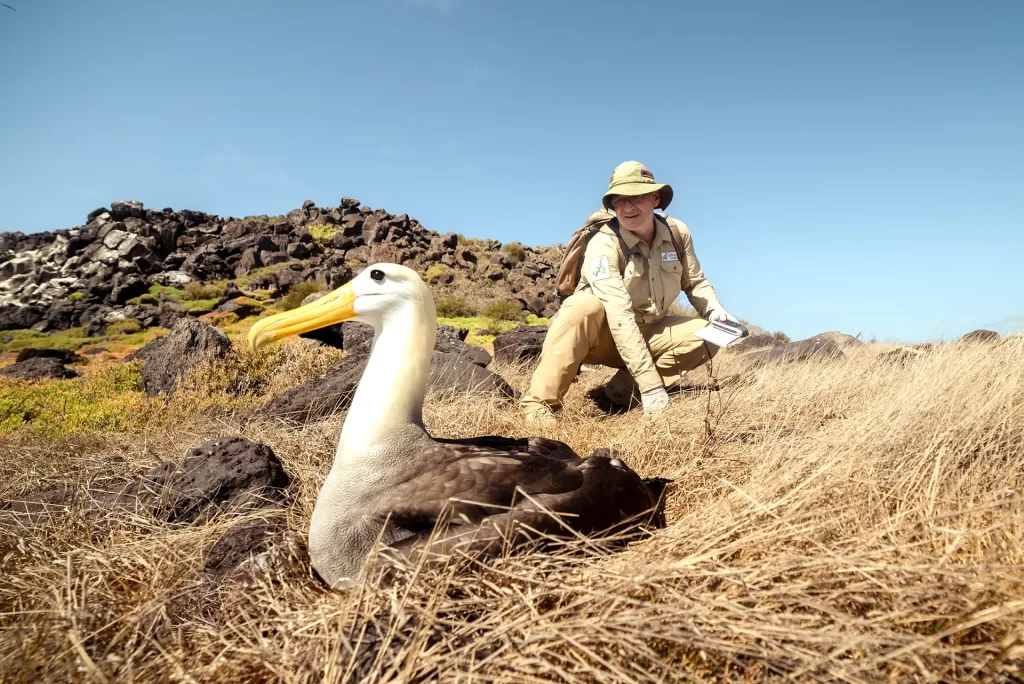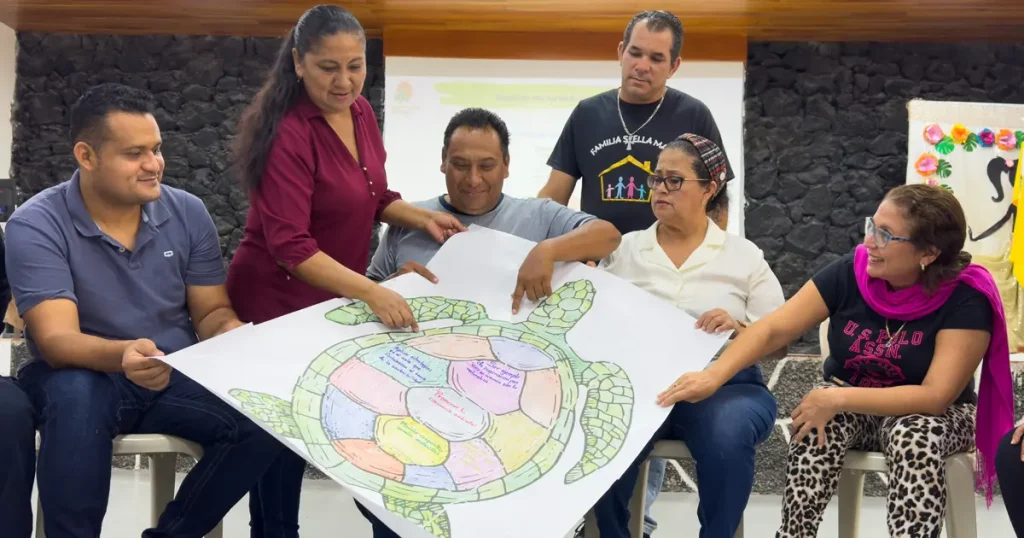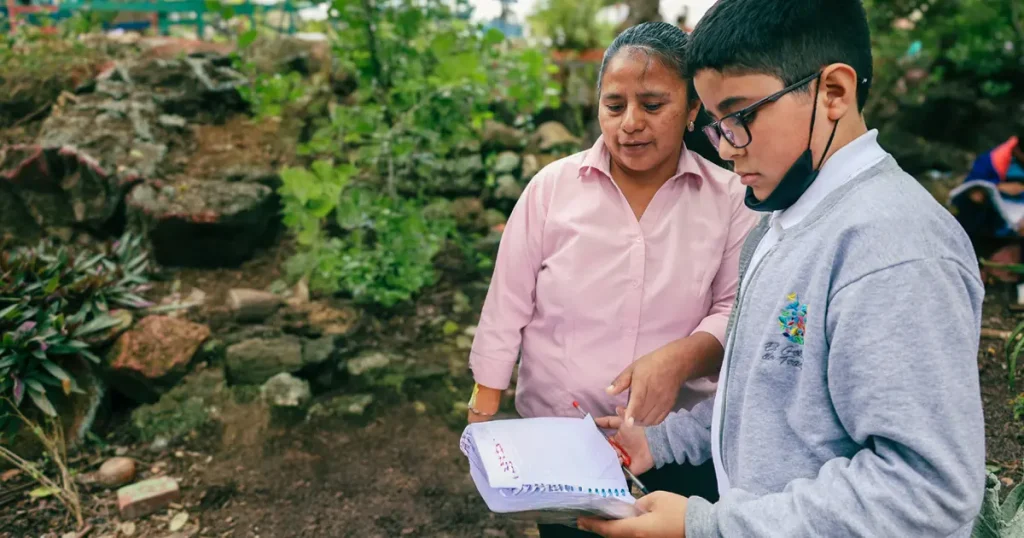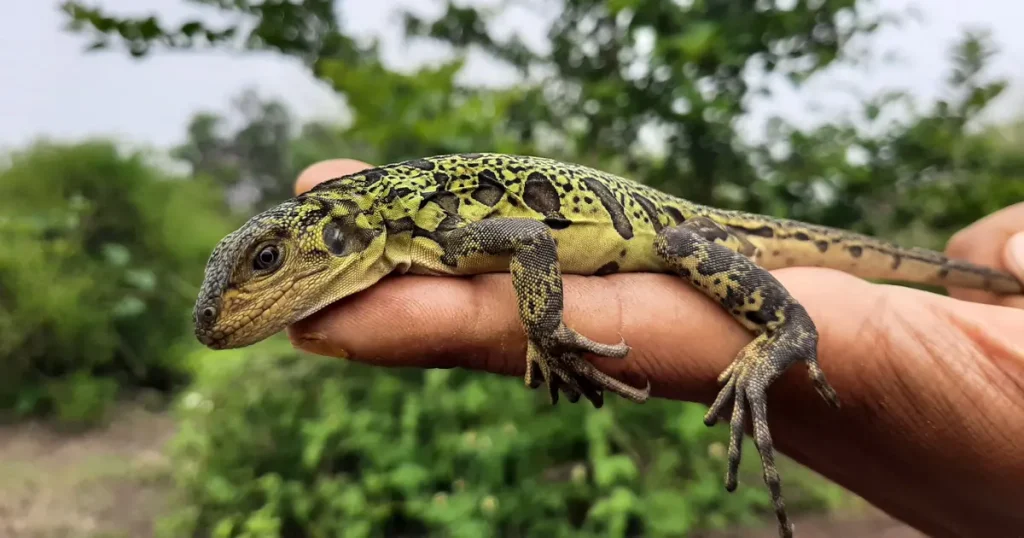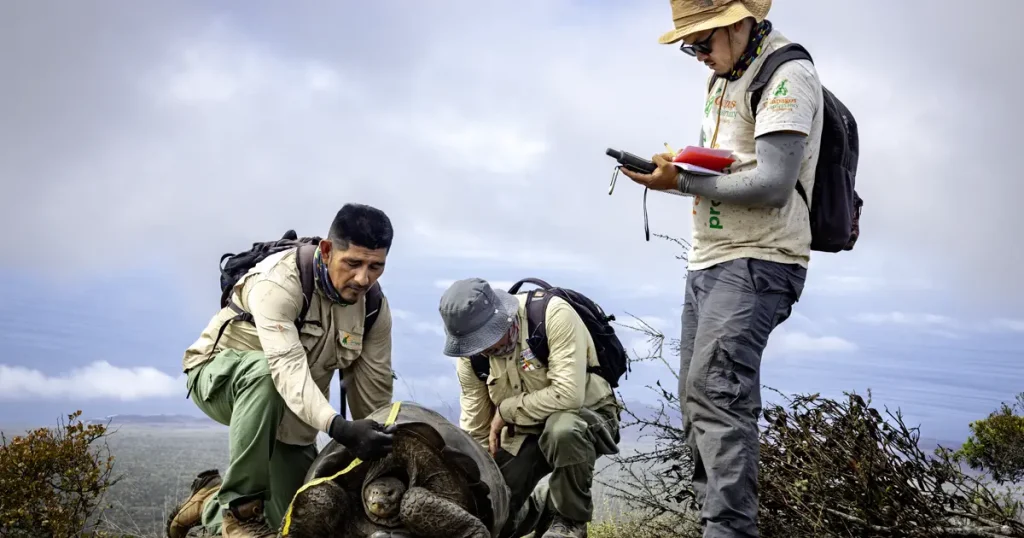Discovering Albatross Nesting Areas in Galápagos
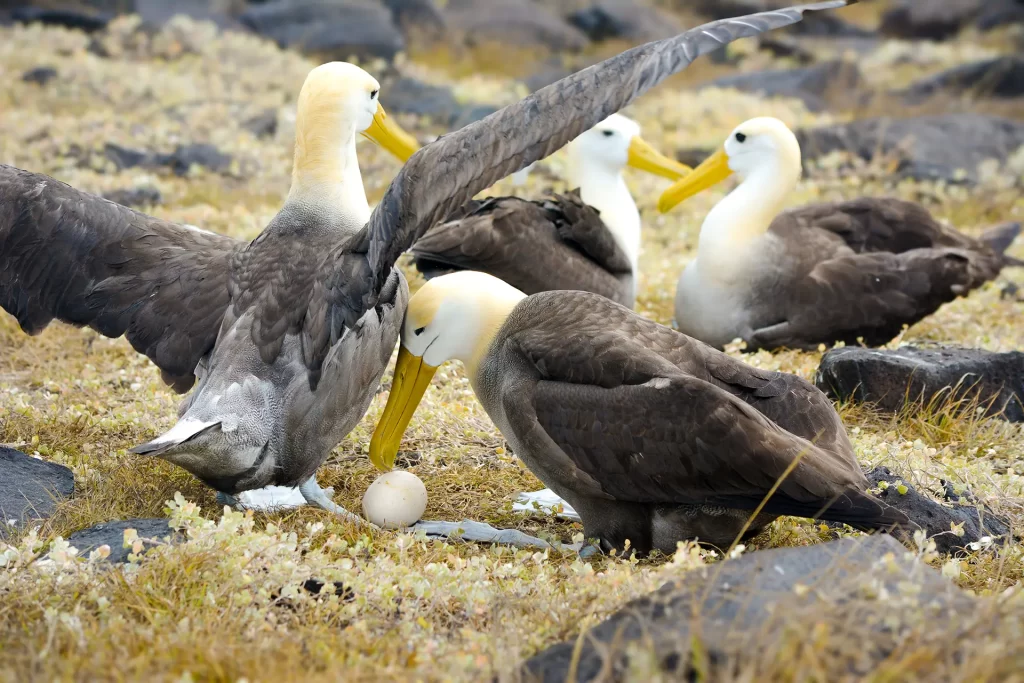
The nesting season of the Waved Albatross (Phoebastria irrorata), a species endemic to the Galápagos, is a highly anticipated event in the archipelago. These magnificent seabirds, renowned for their graceful flight and impressive wingspan, return every year to their nesting colonies on Española Island, the only place on the planet where they nest. Here they can be studied and vital information can be gathered to help safeguard this iconic species.
Reproductive Cycle and Feeding
Waved albatross have an annual reproductive cycle that begins with the arrival of males at the nesting colonies on Espanola Island, followed by more mature females and then younger ones. The egg-laying period extends from mid-April to late June, with the first chicks appearing in early June. Then the long nestling period begins – the new generation of albatross does not leave the nest until late December and early January, tended carefully by their parents during those long intervening months. Most albatross choose to breed every year but some pairs skip certain years. The average age at first reproduction ranges from four to six years, with some individuals returning to the colonies as early as two years of age.
The Waved albatross’ reproductive cycle is a meticulous process that occurs annually on Española Island and begins with careful selection of a nest site. After a period of courtship, which involves dance displays, bill rattling, and vocalizations to strengthen the bond between pairs, the female Waved Albatross lays a single egg. Both parents share the responsibility of incubation, taking turns to protect and keep the egg warm at night and shaded and cool during the day.
After around two months, the egg hatches, and a fluffy chick emerges. The parents continue to care for the chick, feeding it with regurgitated, oily food. These birds primarily feed on squid, fish, and crustaceans. Additionally, they may supplement their diet by collecting food discarded by other marine species, such as cetaceans. It is important to note that Waved Albatrosses have an extensive foraging area, ranging from the Galápagos Islands to the mainland Ecuadorian coast and south to Chile.
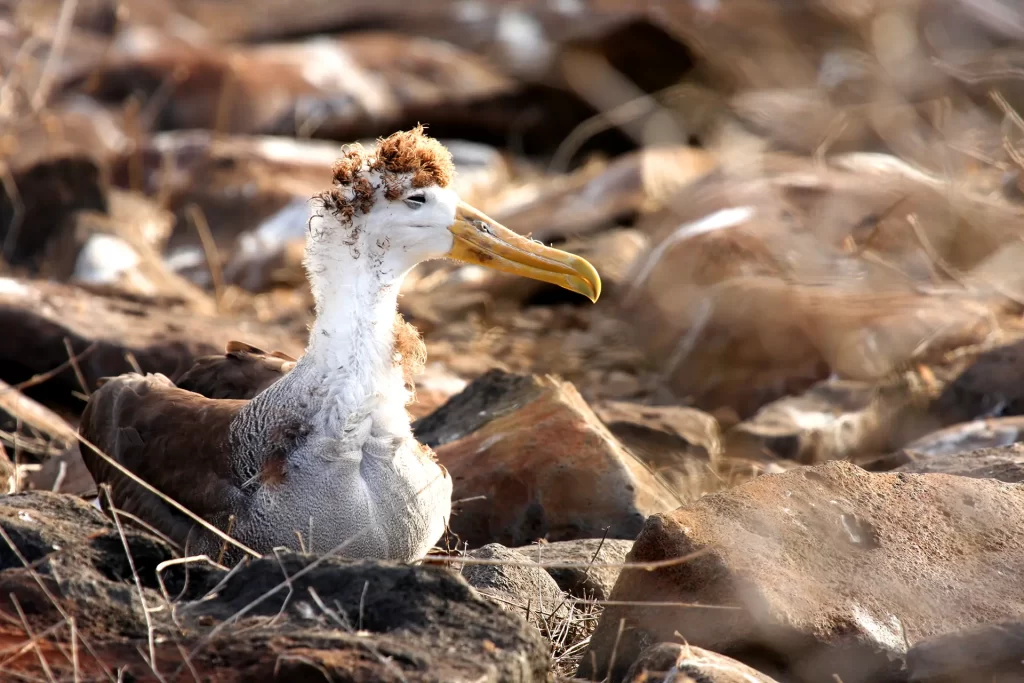
The parents also protect their developing young from natural predators, such as the Galápagos hawk and frigatebirds, as well as adverse weather conditions. Eventually, after many months of being tended by their dutiful parents, in December the young albatrosses teach themselves how to fly, and then take their first flight to the sea after they have fully molted. They will then spend several years at sea before returning to the nesting colonies as adults to breed.
Primary Threats
The Galápagos Albatross is facing several threats which have resulted in it being classified since 2018 as “Critically Endangered” by the International Union for Conservation of Nature (IUCN).
One of the most significant threats comes from changes in temperature regimes, such as El Niño events, which are linked to climate change. These events can reduce the availability of food at the ocean surface for the albatross, causing the parents to struggle to feed their chicks adequately. Waved Albatross are also attracted to the baited hooks used in long-line commercial fishing, and accidental capture and drowning is a major problem. Marine pollution, especially floating plastic waste, is mistaken by albatross for food, and can be ingested and pose digestive problems.
Because they nest on only one island – Espanola Island in Galapagos – changes to nesting habitat also pose a problem for Waved Albatross. These are elegant fliers at sea but they struggle to land and take off at their nesting island when too many trees encroach on their nesting areas.
All of these threats together require collective conservation efforts to safeguard Waved Albatross and ensure their long-term survival.
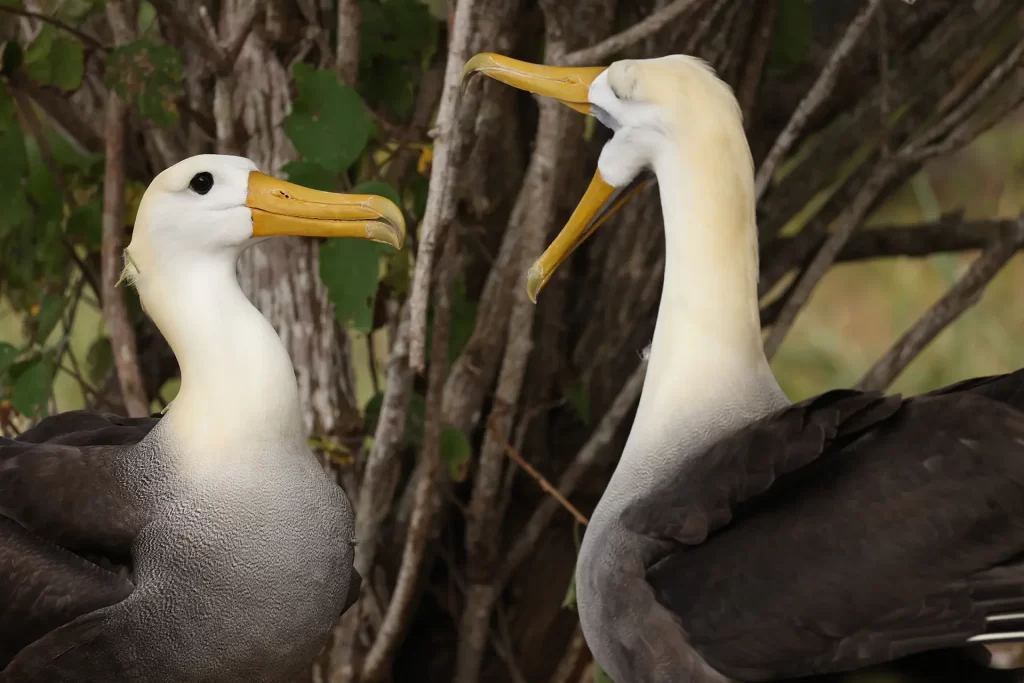
Species Conservation Actions
In June 2019, 2021 and 2023, we conducted the first comprehensive surveys of the nesting population that provided updated data on albatross population size and distribution, estimating around 35,000 individuals. Although preliminary results suggest a stable population, there was a strong reduction in nesting population in 2023 due to the impact of the El Niño phenomenon that same year.
In addition to monitoring nesting colonies, we implement conservation actions to ensure that nesting areas remain free of obstacles. Through our joint initiative with the Galápagos National Park Directorate, known as the Galápagos Initiative, we carry out concrete actions, such as clearing albatross landing and takeoff runways, thus ensuring albatross can easily access nesting areas throughout the nesting season.
One surprise outcome of our work has been determining that the reintroduction of tortoises on Española Island generates indirect benefits for albatrosses. These tortoises, by trampling the ground and removing vegetation, tend to reduce the incursion of the trees that make it difficult for albatross to land and take off, contributing to more favorable conditions for seabirds. Tortoises are recognized as ecosystem engineers in the Galápagos due to their ability to control and modify plant communities, actions that, as the tortoise population expands on the island, will help ensure that albatross can land and take off safely.
In summary, the start of the albatross nesting season in Galápagos is a reminder for us to take action to protect and conserve remarkable species. To ensure its survival, we need to regularly monitor its nesting population, implement habitat management practices, and collaborate with various organizations and local communities to do so. By working together, we can guarantee a prosperous future for albatrosses.
